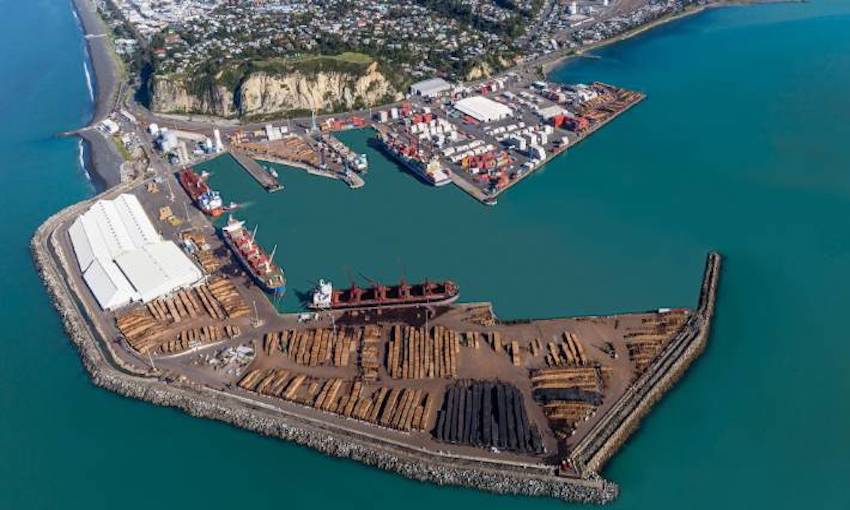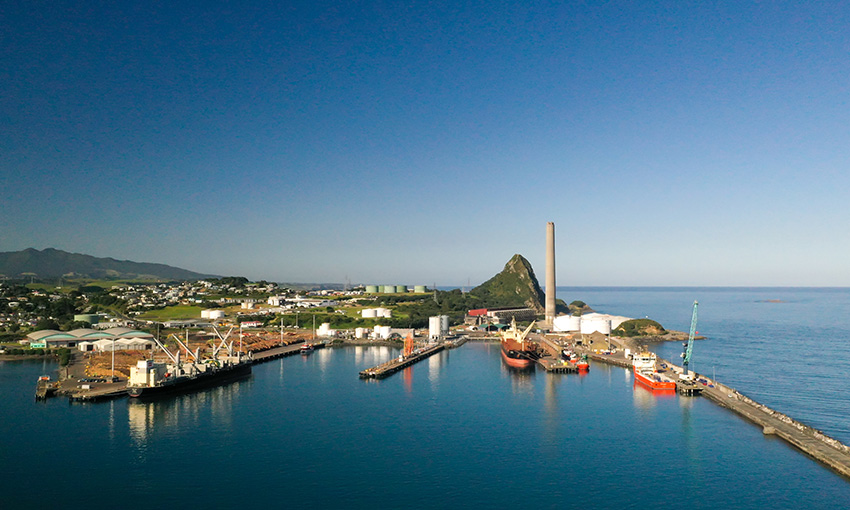NEW Zealand’s Napier Port reported a tough first half of the NZ financial year, which ends on 31 March.
The NZX-listed port said revenue fell 3.6% to NZ$50.7 million from NZ$52.6 million in the same period last year, with the fall reflecting lower trade volumes and the reduction in vessel calls following supply chain and COVID disruptions.
The result from operating activities decreased 22.8% to NZ$16.4 million from NZ$21.3 million in the same period last year, due to the reduction in revenue alongside an increase in operating expenses.
And the port’s underlying NPAT decreased 32.1%to NZ$7.2 million from NZ$10.6 million in the same period last year.
In a statement, the port company said the trading environment and prices for key primary industry cargoes that cross Napier’s wharves has continued to be positive. At the same time, we have made exceptional progress putting in place the infrastructure that will underpin the prosperity of the region and Napier Port for the long term.
“These successes and the favourable trading environment have, however, been overshadowed by ongoing seasonal labour shortages and by an escalation in global shipping disruptions that have created challenges for all parts of the supply chain – customers, ports, shippers, carriers, and agents,” The port company said.
“As a direct result we saw a 16.6% reduction in container volumes for the half-year period to 113,000 TEU from 135,000 TEU in the same period a year ago, with container ship visits falling to 102 from 133.”
Napier Port also saw an 8.7% reduction in bulk cargo volumes to 1.7 million tonnes this past half financial year from 1.9 million tonnes the same period last year.
Napier Port chief executive Todd Dawson said shipping schedule reliability has continued to be unpredictable, resulting in missed or delayed vessel arrivals at Napier Port as well as at other ports throughout New Zealand and internationally.
“Ships arriving have required larger container exchanges for both us and cargo owners to manage. These factors have been compounded by pandemic-related absences across cargo owners’ workforces and adverse local seasonal weather conditions. This created challenges for primary sector production and further disrupted the flow of cargo,” Mr Dawson said.
“While we do not expect any immediate easing in the global supply chain challenges, we are confident that – as COVID-19 becomes endemic and the shipping industry gradually adapts to the current trading environment – these pressures will lessen. Our focus therefore is working to keep the supply chain open and cargo flowing to minimise these disruptions.”
Mr Dawson said the challenging trading conditions have continued to place significant demands on the port’s people.
“We are grateful and impressed by the way they have worked to maintain and enhance the links that Napier Port maintains between the wider regional economy and international markets,” he said.
“A key success has been the vigilance they have displayed with regards to Covid prevention and containment, slowing its spread across our workforce. Covid-related absence, at any one time, did not exceed 11% between January and March 2022, which meant no operations were stopped as a result of Omicron.”
Mr Dawson said Napier Port has continued to look through the current disruption and focus on ensuring our region maintains direct, efficient and competitive links to world markets.
“The most notable achievement has been the significant progress we have made bringing the intergenerational investment in 6 Wharf to near completion. The project, now in the commissioning phase, continues to deliver ahead of schedule and at a lower cost than initial estimates. It is set to officially open in July 2022,” he said.
“The new wharf opens up growth opportunities and shipping options for cargo owners across the central and lower North Island. It will allow us to accommodate the larger vessels arriving in New Zealand and provide greater flexibility and availability across all our wharves.”
The additional capacity of 6 Wharf is to begin to be evident in the new financial year.
“We also believe this new capability will enhance the attractiveness of Napier Port to shipping lines and that it will help to encourage others to follow Zim Integrated Shipping Services, which has launched a new trans-Tasman service that calls at Napier Port,” Mr Dawson said.
Mr Dawson said the trade outlook for the region remains positive, with primary sector commodity prices remaining high and a stronger second half anticipated for meat, forestry and horticulture exports.
“Even though there are signs the pandemic is abating, Napier Port still faces uncertainty in the supply chain, including shipping disruption, labour shortages and high-cost inflation,” he said.
“Noting these continuing uncertainties and assuming a continuation of the current market conditions, Napier Port reaffirms the earnings guidance provided in April for the underlying result from operating activities for the year to 30 September 2022 to range between NZ$38 million and NZ$42 million.”





